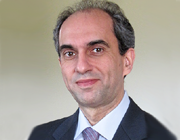Citation:
Bartzela TN, Katsaros C, Bronkhorst EM, Rizell S, Halazonetis D, Kuijpers-Jagtman AM. A two-centre study on facial morphology in patients with complete bilateral cleft lip and palate at nine years of age. Int J Oral Maxillofac Surg. 2011;40(8):782-9.
Abstract:
The aim of this study was to compare craniofacial morphology and soft tissue profiles in patients with complete bilateral cleft lip and palate at 9 years of age, treated in two European cleft centres with delayed hard palate closure but different treatment protocols. The cephalometric data of 83 consecutively treated patients were compared (Gothenburg, N=44; Nijmegen, N=39). In total, 18 hard tissue and 10 soft tissue landmarks were digitized by one operator. To determine the intra-observer reliability 20 cephalograms were digitized twice with a monthly interval. Paired t-test, Pearson correlation coefficients and multiple regression models were applied for statistical analysis. Hard and soft tissue data were superimposed using the Generalized Procrustes Analysis. In Nijmegen, the maxilla was protrusive for hard and soft tissue values (P=0.001, P=0.030, respectively) and the maxillary incisors were retroclined (P<0.001), influencing the nasolabial angle, which was increased in comparison with Gothenburg (P=0.004). In conclusion, both centres showed a favourable craniofacial form at 9-10 years of age, although there were significant differences in the maxillary prominence, the incisor inclination and soft tissue cephalometric values. Follow-up of these patients until facial growth has ceased, may elucidate components for outcome improvement.
